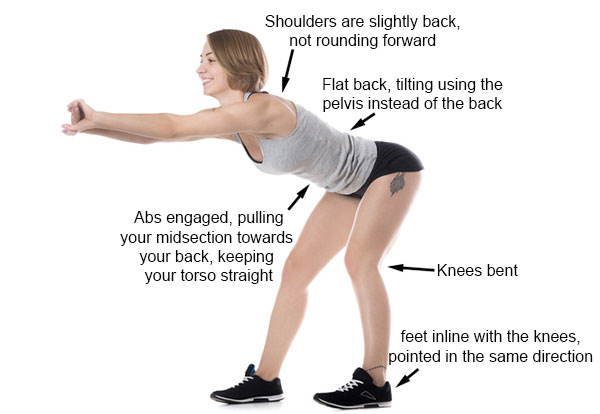The Banded Hip Hinge
What is a Hip Hinge?
The hip hinge involves bending forwards at the hips while maintaining alignment of the spine. Think about it sort of like turning yourself into the shape of letter L. It is an important movement as it allows for the dissociation of movement from the hip and lumbar spine. Without it our body has to compensate using other movements to bend such as flexing the spine, ankles or placing excessive force through the knees. This movement of the hips may look and sound simple. However, several of my clients who came to me with low back pain were unfamiliar with, and unable to execute an adequate hip hinge. Once I get their pain under control the first thing I do is teach them how to hinge properly.
The term hip hinge may sound familiar to you, as you have probably heard people in the gym use it. It's an essential component of the squat and deadlift. It allows for stability of the spine while moving the hips to lift heavy weight.
However, it is not just important in the gym. It is also important for everyday activities. An inability to execute this movement during daily, functional tasks often leads to the person compensating with flexion of the spine, leading to lower back pain and injuries.
Some examples of functional tasks include: getting in and out of your dinner chair, on/off the toilet, picking up items from the ground. It's because of peoples inability to do this that I see so many lower back injuries.

Resistance Band Variation
An effective way to facilitate and practice the hip hinge is by utilising a resistance band as outlined in the video below.
The band provides an external cue for you to sit your hips back for the hinge, and contract the glutes to return to standing. A thicker band may be needed for some to provide sufficient force to bring the hips back; find a band that suits you. The end of the video demonstrates how this movement progresses into a compound movement such as the deadlift.
Things to Consider
Before you get started with this exercise have a think about what you're currently capable of. Common faults that hinder this movement include quad-dominant lifters, poor hip mobility, and poor core stability. If you believe that you fall into one of these categories then you may also want to work on your weakness while learning this movement.
It is best to learn this movement with unloaded exercises and slowly progress to weighted or barbell variations. Do not be frustrated if it takes time to learn. Have patience. Strength comes from great form and movement patterns. Without it you'll be dumping a lot of potential power and placing excessive stresses on joints and structures that were not designed to hold these forces.
If you would like to learn more about how this can help prevent/improve back pain come see me at Braydon Vo Physiotherapy